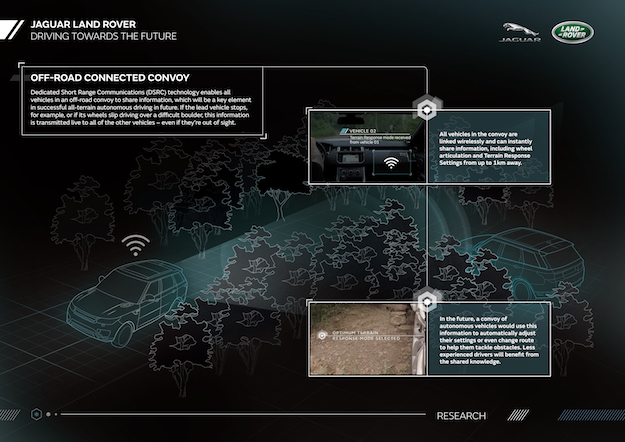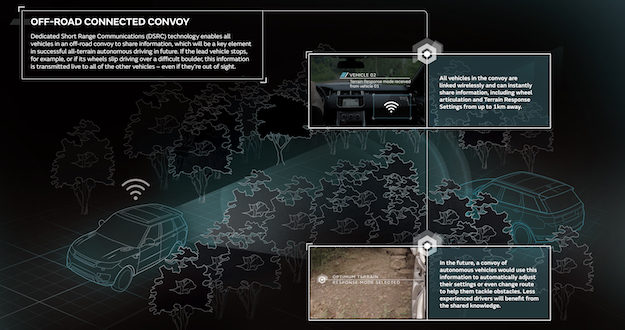Cars actually driving themselves – even on the best of roads – may still seem like science fiction to many Kiwis, however Jaguar Land Rover’s New Zealand general manager Steve Kenchington believes the technology will ultimately be perfectly suited to our motoring conditions.
The company has recently unveiled technology that will allow autonomous cars to drive themselves over virtually any surface or terrain. It is a multi-million dollar research project which aims aims to make the self-driving car viable in the widest range of real life, on- and off-road driving environments and weather conditions.
“Jaguar Land Rover’s vision is to offer autonomous driving on any terrain,” Mr Kenchington said. “Some of the technological advances unveiled by the company this week have been truly incredible. The idea of Kiwis leaving one of our major cities and heading up to a ski-field or to a remote beach in a vehicle driven by itself could become a reality much sooner than any of us expect.”
The technology the company was developing – such as the ability of on-board computers to sense changes in terrain and even obstacles suspended in the air above roadways and tracks – would have applications for both autonomous and people-driven cars. Ultimately, whether the vehicle is person driven or autonomous, such technology will make driving on all surfaces safer.
In the future, if you enjoy the benefits of autonomous lane keeping on a motorway at the start of your journey, you will be able to use this support all the way to your destination, even if this is via a rough track or gravel road. The car will be able to take control if the driver is unsure of how to tackle and obstacle or hazard.
The next-generation sensing technologies being developed will be the eyes of the future autonomous car. Because the sensors are always active and can see better than the driver, this will ultimately give a vehicle the high levels of artificial intelligence required for the car to think for itself and plan the route it should take, on any surface.
Jaguar Land Rover’s Head of Research Tony Harper says the surface identification and 3D path sensing research combines camera, ultrasonic, radar and LIDAR sensors to give the car a 360 degree view of the world around it, with sensors so advanced that the car could determine surface characteristics, down to the width of a tyre, even in rain and falling snow, to plan its route.
“The key enabler for autonomous driving on any terrain is to give the car the ability to sense and predict the 3D path it is going to drive through,” Harper said. “This means being able to scan and analyse both the surface to be driven on, as well as any hazards above and to the sides of the path ahead. This might include car park barriers, tree roots and boulders or overhanging branches, as well as the materials and topography to be driven on.”
Another key element of successful all-terrain autonomous driving is the ability for vehicles to communicate with each other, especially if they are out of sight around a bend or on the other side of an off-road obstacle.
In a world-first off-road demonstration, the company has connected two Range Rover Sports together using DSRC (Dedicated Short Range Communications) technology to create an Off-Road Connected Convoy. This wireless vehicle-to-vehicle (V2V) communications system shares information including vehicle location, wheel-slip, changes to suspension height and wheel articulation, as well as All-Terrain Progress Control (ATPC) and Terrain Response settings instantly between the two vehicles.










Join the Discussion
Type out your comment here:
You must be logged in to post a comment.